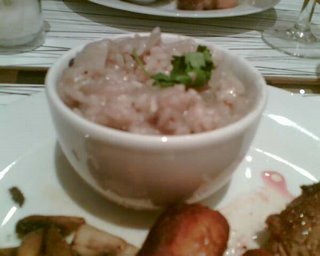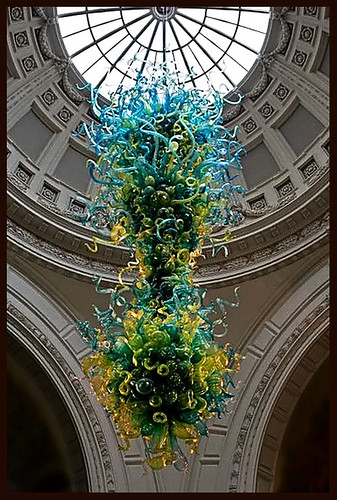I threw away my old hairbrush the other day, a brown wooden stalwart my mum had given me when I was about 15, to replace my previous hairbrush (a pink Little Five Stars cartoon nylon bristle cutie for kids). I never replaced it, even though it gained a few broken bristles over the years, because for me, a hairbrush was purely functional. So long as it got rid of tangles and kept my hair presentable, I was happy to use it.
But now I'm 31, a different person, and yet the same. I still like my hairbrushes functional, but my idea of "functional" has changed. I don't know where I picked up my taste for the little things in life - it's the type of quiet metamorphosis that only time can wrought. So...

My new Mason Pearson nylon/bristle brush
Moving on to my next topic (and admittedly exercising tenuous artistic licence here) may I say that it's the same with beef rendang - this quiet metamorphosis. Beef rendang can be described as a slow reverse braise. Imagine the meat transforming in its braising liquid over hours on the stove, its muscle-holding collagen slowly melting, the coconutty liquid slowly evaporating, the spices blossoming into a heady fragrance. For a long time, nothing exciting happens - the stew-like thing bubbles away obliviously, everything is calm. Then, suddenly, when almost all the liquid has gone, something magical happens. A clear shiny orange film begins to separate, and the spice-clad chunks of beef, tenderised by the hours, are left browning in their own oil. Metamorphasis, I tell you.
This recipe is adapted from Molly Steven's excellent tome on All About Braising, with several tweaks from home:
Update: New batch
with new Le Creuset cocotte (13th July 2007)
Beef Rendang
(sorry my guests were so hungry I didn't get to take any pics! But will attempt again some time this week... watch this post!)
Paste:
6 chilli padis (the small ones), chopped coarsely
2 lemongrass stalks (remove the outer woody layer), chopped coarsely
4 shallots, chopped coarsely
3 garlic cloves, chopped coarsely
2.5" ginger, chopped coarsely
2" tumeric (the tumeric found in England tends to be quite skinny, so I use 3x 2" roots), chopped coarsely
2" galangal, chopped coarsely
5 candlenuts (buah keras)
pinch of coarse salt
Braise:
1kg beef shank + 0.5kg brisket
2 tbsp oil
3 star anise
5 cardamon pods
2 cinnamon sticks
1 1/2 tsp sugar (or slightly more if you like your rendang sweet)
salt
1 can coconut milk (or as needed)
4 kaffir lime leaves (optional)
~ * ~
1. Grind all the paste ingredients in a food processor, adding 2-3 tbsp of water if too dry. The result should be a yellow paste with no fibrous bits in it.
2. Heat oil in a heavy bottomed pot (I use Pyrex or Le Creuset). Fry paste for about 8 minutes until it appears a bit glossy. Throw in the star anise, cardamon and cinnamon. Stir a few times to let the spices blossom. Then add the meat and mix, coating the meat evenly with the paste.
3. Add enough coconut milk to cover the meat, and season with sugar and a generous pinch of salt. Stir to blend everything - the liquid should turn a pale yellow. Bring to a gentle simmer and braise on a very low fire, uncovered, for about 2.5 hours. Stir occasionally, making sure that the simmer remains quiet (no torrent of bubbles). If necessary, take the pot away from the fire for a while till it "calms down" before returning it to the fire.
4. The liquid will darken as it cooks. When the liquid reduces to a thick paste, stir in the lime leaves and continue braising. Soon, a film of oil will separate out from the paste. When this happens, the beef will fry in its own oil until it is browned. This should take another 45 mins-1hr, stirring more frequently.
5. The result is a dry braise, chunks of beef with the aromatic and exotic paste clinging to each piece. Garnish with coriander and/or thinly sliced red chillis.
Serves 4-6.
A spicy prelude to ngoh hiang (Peranakan spring rolls), briyani, goreng pisang (deep fried bananas) and films like '10 Things I Hate About You', served with bucketfuls of conversation and laughter.
Update: Leftovers (from 13th July)

roll of ngoh hiang I fried on the Wednesday next






































